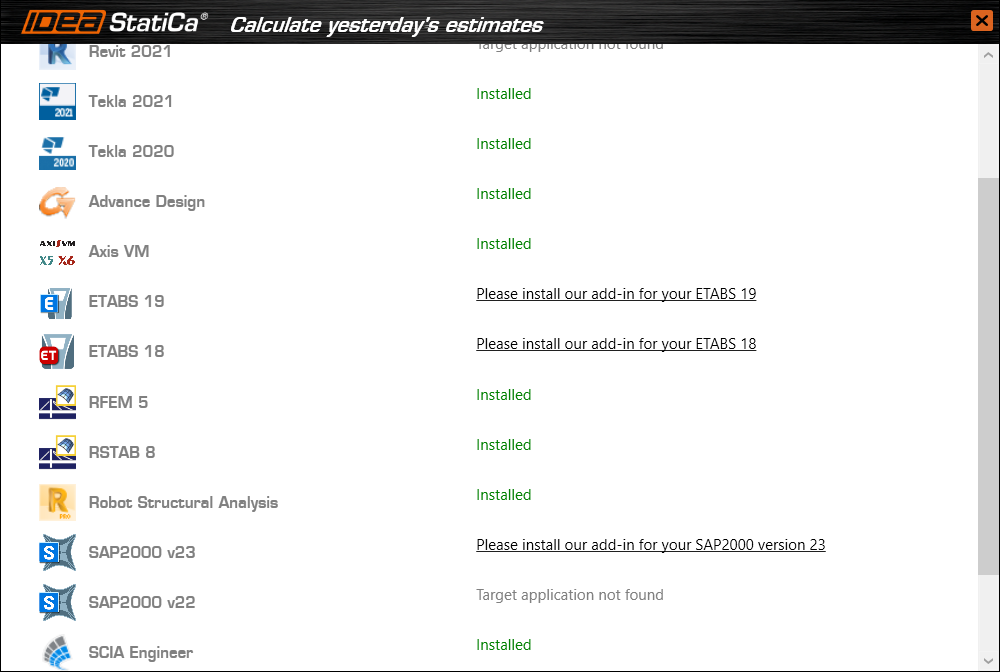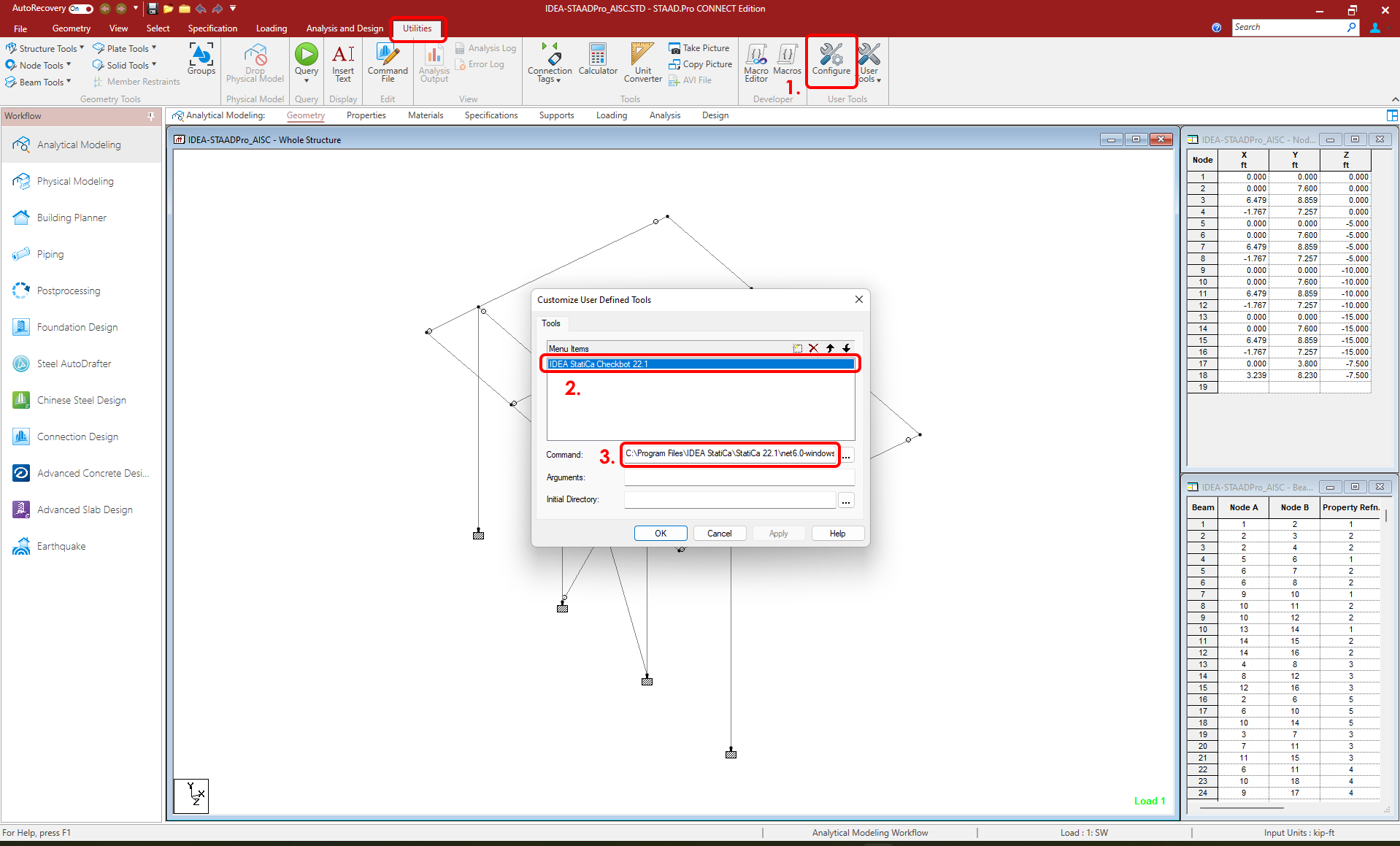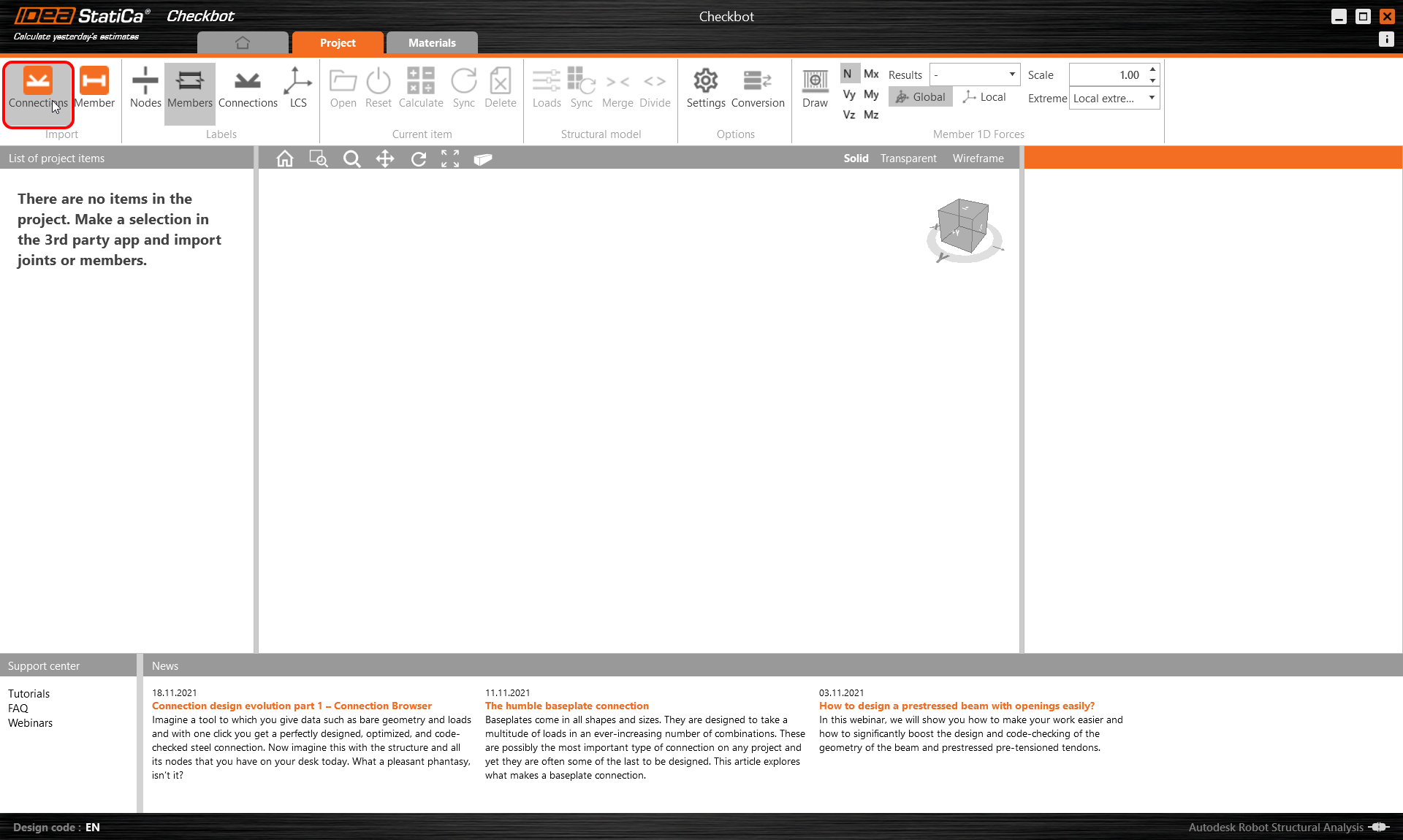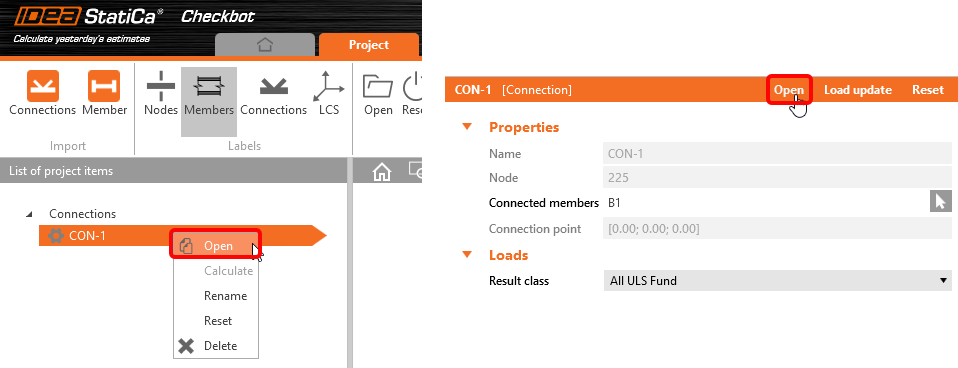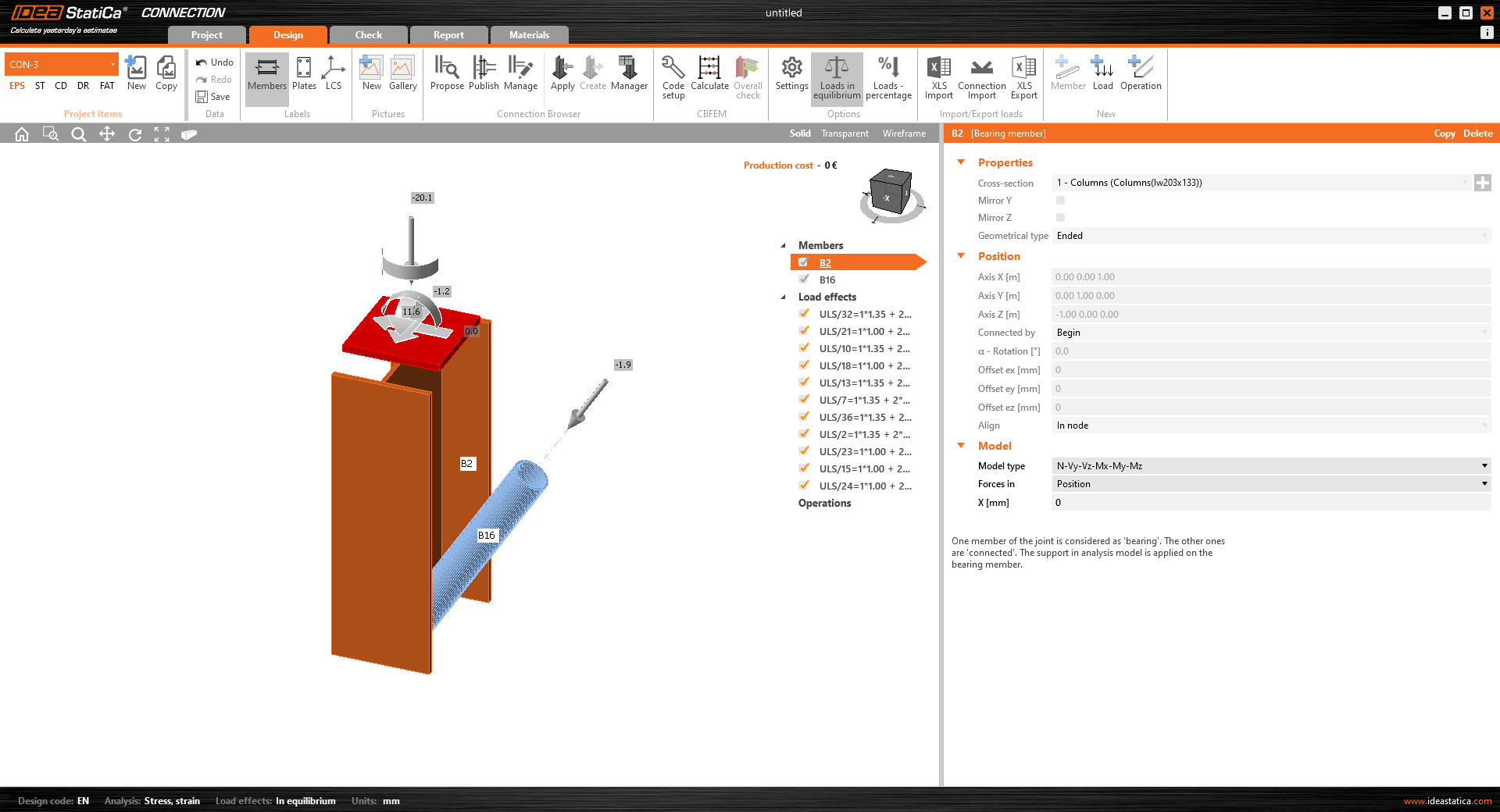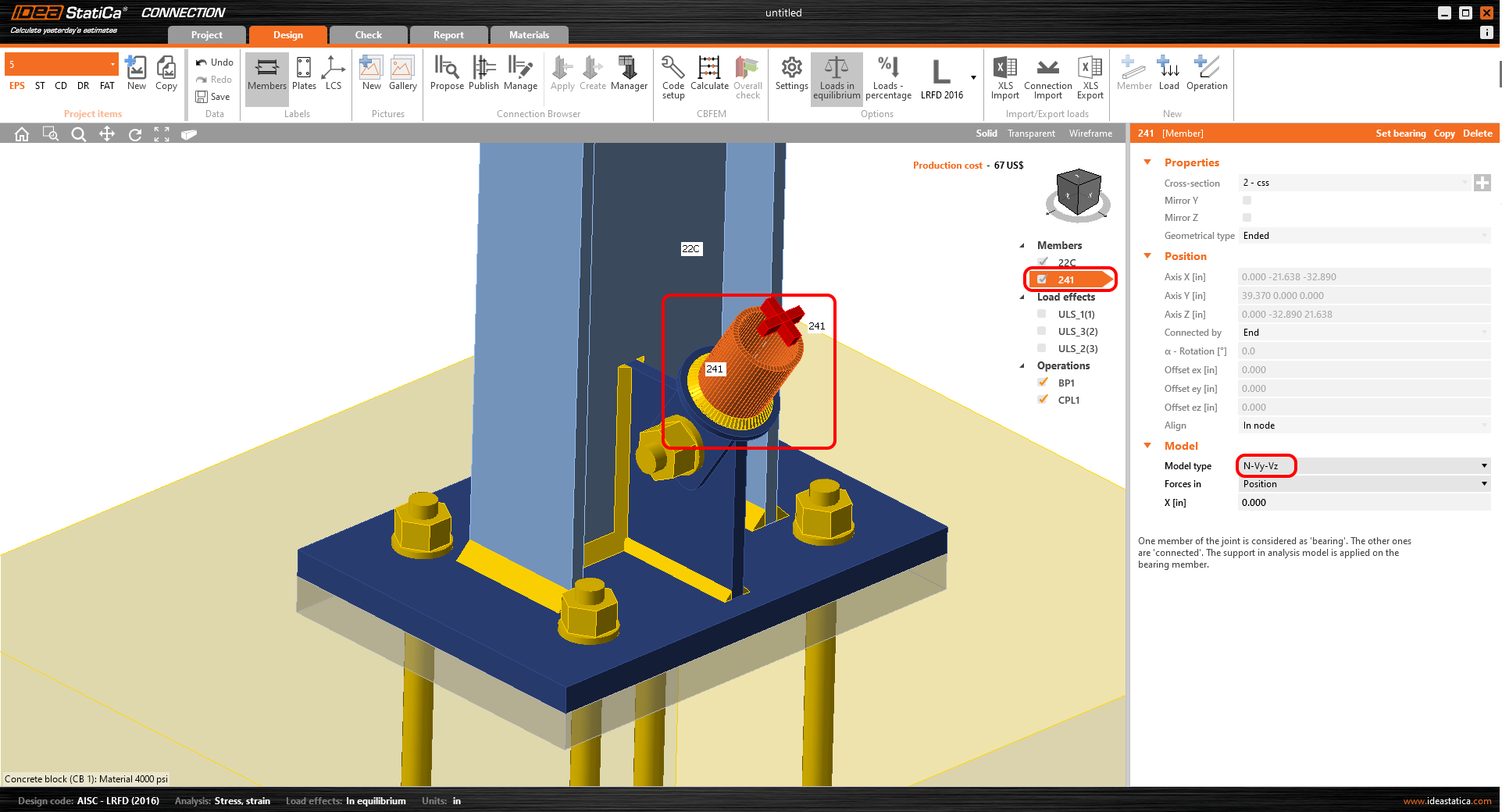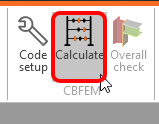STAAD.Pro BIM link for steel connection design (AISC)
How to activate the link
- Download and install the latest version of IDEA StatiCa
- Make sure that you are using a supported version of your FEA/BIM solution
IDEA StatiCa integrates BIM links into your FEA/BIM solutions during its installation. You can check the status and activate more BIM links for software installed after in the BIM link installer.
Please note that some FEA solutions require additional steps to fully activate their BIM link to IDEA StatiCa.
Open IDEA StatiCa and navigate to the BIM tab and open the BIM link installer (Activate your BIM link...).
A notification "Do you want to allow this app to make changes to your device?" may appear, if so, please confirm with the Yes button.
The BIM link for the selected software (if found) is installed. The screen also tells you the status of other BIM links that may have already been installed.
- Please be aware that you need to have installed Microsoft .NET 6.0 and higher for successful usage of the BIM link.
In case of having issues with starting the Checkbot application, please see the following instruction:
Under Utilities in the top ribbon, select User Tools - Configure (1). Here, select the already installed plug-in (2):
- Check, whether the path is set as C:\Program Files\IDEA StatiCa\StatiCa 22.1\net6.0-windows\IdeaStaadProPlugin.exe (3). This should be done automatically by the software.
- If not, please, set it like it is described in step no. 3
Confirm by OK.
The IDEA StatiCa plugin has been added and can be accessed under User Tools now. (Restart of the STAAD.Pro app could be needed for having the plugin available in the drop-down menu list)
Please see the remarks about the limitations of this BIM link.
How to use the link
Download and open the attached STAAD.Pro project file and run the analysis. Go to Utilities - User Tools and open IDEA StatiCa Checkbot plugin. This will open the Checkbot application.
Select the New option with Steel project type, AISC design code and sub-code LRFD (AISC 360-16) and create project.
The new Checkbot project is ready to import connections from STAAD.Pro.
In Staad.Pro, select one of the inside columns making sure you also select the lowest node using the geometry cursor.
Import
Then in Checkbot select Connections.
This will import the column and its load effects into Checkbot - with the same coordinates, orientations, and section sizes as per the FEA/BIM model.
Please note that your node and member numbering might be different.
Please note the 3D workspace is designed to show an overview of the imported structure and not a detailed view of the actual connections.
For more information on Checkbot, see here.
For several FEA/BIM solutions, you can also import multiple connections into Checkbot in the same manner as above. Instead of selecting one node and the connected members, you can select several nodes and members using the selection methods within the application.
We recommend not importing all of the connections at the same time but building up the connections incrementally.
Geometry
In the list of project items under Connections and with a connection highlighted in Checkbot you can either right-mouse click and select Open or click the ribbon command Open to start designing, code-checking, and reporting.
The settings of members are taken from the original FEA/BIM application. You can, however, change the section size of any member on the main Checkbot screen, but this will break the link with FEA/BIM application in this session unless it's synchronized again.
The imported connection is opened in the IDEA StatiCa Connection application.
You may see none or different Load effects from your preferred FEA/BIM* solution depending on how the load case combinations have been defined. By default, IDEA StatiCa will choose the most critical for code-checking purposes. (* Some BIM solutions are not able to store the load case combination results)
For more information on Load effects see here.
Design
We are going to use the Connection Browser function to generate a connection. Select Propose and IDEA StatiCa will put forward possible solutions for the current geometry.
Choose the suggested Simple Baseplate and press OK.
Change the proposed values for the bolts to 3/4 A325 and accept the concrete block.
Baseplate and anchors have been created.
Now we are going to adjust the parameters of the applied operations.
Baseplate
Connecting plate
As we have connected the diagonal brace using a single bolt connection, we must also change the Model type of the brace member to N-Vy-Vz. Select the brace in the list of Members and modify the Model type in the drop-down list.
This is what the designed connection looks like.
Code check and Report
To run a code check, we must also make sure that the code is correct in IDEA StatiCa Connection. From the Design tab in the Options panel choose LRFD 2016 from the sub-code list.
Now run a code check using the Calculate icon in the CBFEM panel from the top ribbon.
Within IDEA StatiCa Connection you can carry out many different types of analysis and code-checks. For more information please see here.
You will get the results of the nonlinear analysis.
The detailed results for plates, bolts, welds, anchors can be displayed using the ribbon menu. In the image below the Deformed shape with Equivalent stress is being displayed.
You can go through the results on anchors as well.
Once the code-check is finished, you can create the report containing results and diagrams for your connection model in the Report tab.
IDEA StatiCa offers a fully customizable report to print out or save in an editable format. For more information, please see here.
Save and exit this connection back to Checkbot.
In Checkbot, you will see a green tick next to the connection. This means that the connection is valid and has passed all code-checks. In the Connection panel, you can also see a representation of the connection and a summary of the code-check results.
If multiple connections are present in Checkbot, then each must be opened, designed, and code-checked.
In the example below, you can see that both baseplate connections have passed their respective code-checks whilst the remaining connections are yet to be validated.
Synchronize connections
Sometimes, there are changes to your FEA/BIM model, such as different member section size or loads. These can be synchronized between Checkbot and the FEA/BIM model.
There are two possible alternatives:
- Synchronize the Current item (if one or more joints are selected)
- Synchronize the whole imported Structural model
To test this feature, you can change a member section size or shape in your FEA/BIM application or amend a load case or combination etc: change columns to a smaller section. Remember to re-analyze the FEA model.
In Checkbot select the designed connections (there may be more than one) and from the Current item panel select Sync.
The Checkbot project will be updated, connection design is preserved, but the results will be invalidated. You can see that the column is now updated - matching the change in the FEA model.
Simply code-check the highlighted connections again by selecting Calculate from the Current item panel. Please remember that bigger changes in the model might require additional validation steps with the affected connections (as above).
If the connections do not give the desired results, then you can open them again to optimize the design (i.e. strengthen if they fail the code-check or lighten if the utilization is too low).
You have successfully linked STAAD.Pro with IDEA StatiCa Connection via Checkbot. You have also designed, checked, and reported on a connection before incorporating changes made in the original FEA model back into IDEA StatiCa Connection.




